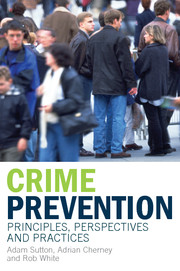1 - Introduction: Crime prevention and community safety in Australia
from PART 1 - THEORY
Summary
Crime prevention has a long history in Australia, and in other parts of the world. In all societies, people have tried to protect themselves and those close to them from assaults and other abuses. Every time someone locks the door to their house or their car, they practise a form of prevention. Most parents want their children to learn to be law abiding and not spend extended periods of their lives in prison. In this country, at least, most succeed. Only a small minority of young people become recidivist offenders. In a functioning society, crime prevention is part of everyday life.
Why, then, have three Australian criminologists written a book about crime prevention and community safety? There are several reasons. The first is that while prevention can be all-pervasive at the grassroots, it is oddly neglected in mass media and political discourses. When politicians, talkback radio hosts and newspaper editorialists pontificate about crime and possible remedies, it is comparatively rare for them to mention prevention. Overwhelmingly, emphasis is on policing, sentencing and other ‘law and order’ responses.
One aim of this book is to understand, and explore ways to overcome, this apparent conspiracy of silence. At various times over the last four decades governments in Australia and other western countries have ‘rediscovered’ crime prevention and committed resources to its development and implementation. Many jurisdictions still have schemes in place. Despite these efforts, prevention and community safety remain background tasks, as far as the mass-media and government crime policy are concerned.
- Type
- Chapter
- Information
- Crime PreventionPrinciples, Perspectives and Practices, pp. 3 - 11Publisher: Cambridge University PressPrint publication year: 2008



